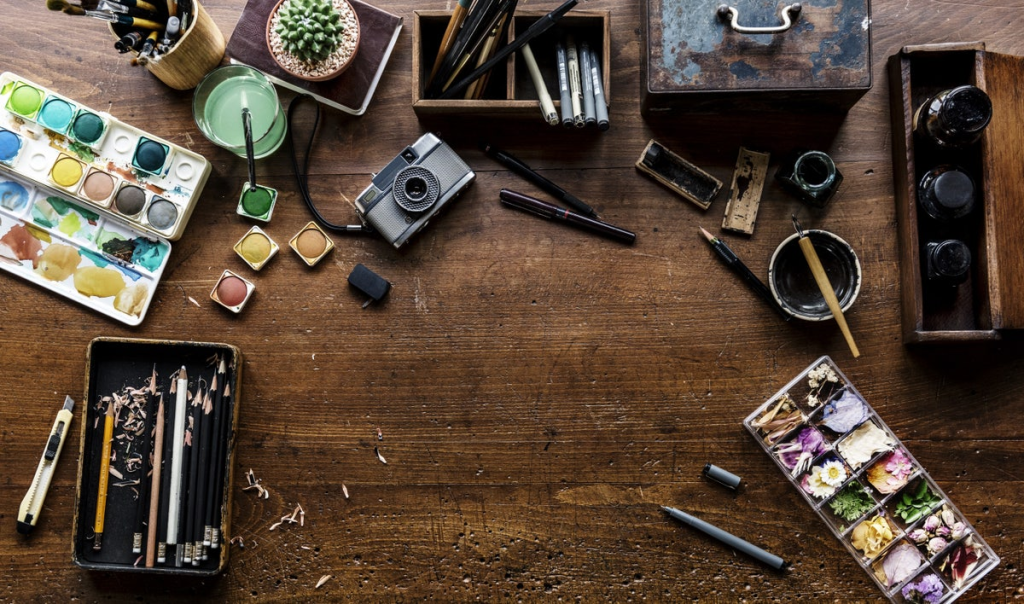In our fast-paced world filled with digital distractions and work pressures, creative hobbies offer a valuable pathway to mental wellbeing and personal fulfillment. Whether it’s painting, knitting, woodworking, or playing a musical instrument, engaging in creative activities provides numerous benefits that extend far beyond the finished projects. This article explores how creative hobbies can transform your life, serving as both an escape from daily stresses and a catalyst for personal growth.
The Science Behind Creative Hobbies and Wellbeing
Research increasingly supports what many hobby enthusiasts have intuitively known: creative activities significantly benefit our mental health. When we engage in creative pursuits, our brains enter a state often described as “flow” – a condition of complete immersion and focused concentration that feels effortlessly enjoyable.
Studies have demonstrated the powerful mental health benefits of creative activities. During creative engagement, the brain releases dopamine, a natural antidepressant that creates feelings of pleasure and satisfaction. This chemical response helps explain why hobbies can be so effective at combating stress and improving mood.
Additionally, creative activities activate multiple brain regions simultaneously, forming new neural connections. This mental exercise contributes to cognitive flexibility and can help maintain brain health as we age. The combination of focus, problem-solving, and creative expression provides comprehensive mental stimulation that few other activities can match.
Stress Relief Through Creative Expression
One of the most immediate benefits of creative hobbies is their ability to reduce stress and anxiety. Several mechanisms contribute to this stress-relieving effect:
Mindful Engagement
Creative activities naturally promote mindfulness – the practice of being fully present in the moment. When painting a landscape or shaping clay on a potter’s wheel, your attention becomes anchored to the sensory experience at hand. This mental presence creates a natural break from ruminating on past events or worrying about future concerns.
Emotional Processing
Creative expression provides a healthy outlet for processing complex emotions. When words feel inadequate, artistic expression can help us explore and release feelings in a constructive way. This emotional catharsis explains why many people instinctively turn to creative activities during difficult life periods.
Sensory Focus
The tactile nature of many hobbies – feeling yarn between your fingers, smelling wood as you carve it, hearing the notes you play on an instrument – engages your senses fully. This sensory immersion pulls you away from stress-inducing thoughts and into your immediate experience, creating a natural form of meditation.

Building Confidence and Self-Efficacy
Beyond stress relief, creative hobbies build lasting psychological resilience through enhanced self-confidence and self-efficacy – the belief in one’s ability to accomplish goals and overcome challenges.
Mastering New Skills
Learning and improving at a creative pursuit creates a powerful sense of accomplishment. Whether you’re mastering a difficult piano piece or perfecting a new knitting stitch, each milestone builds confidence that extends into other areas of life.
Tangible Achievements
Unlike many professional achievements that can feel abstract, creative hobbies produce tangible results. The scarf you knitted, the landscape you painted, or the song you learned to play serves as concrete evidence of your capabilities and growth.
Embracing Imperfection
Creative pursuits teach us to embrace the learning process, including its inevitable mistakes. This comfort with imperfection fosters resilience and reduces perfectionism, allowing us to approach other life challenges with a healthier perspective.
Social Connection Through Shared Creativity
While many creative activities can be enjoyed independently, they also offer rich opportunities for meaningful social connection:
Community Belonging
Hobby groups, classes, and online communities create spaces where people with shared interests can connect. These communities often transcend typical social boundaries, bringing together diverse individuals united by their passion for a particular creative activity.
Intergenerational Bonds
Creative hobbies frequently create connections across generations. Grandparents teach grandchildren traditional crafts, young musicians play alongside seasoned performers, and online forums allow enthusiasts of all ages to share knowledge and inspiration.
Non-Verbal Connection
For those who find traditional socializing challenging, creative hobbies provide alternative ways to connect. Sharing a finished project, collaborating on a creative endeavor, or simply appreciating another’s work creates meaningful bonds without requiring extensive verbal interaction.

Creative Hobbies and Life Balance
In our achievement-oriented culture, creative hobbies offer something increasingly rare: space for activity that is valued for its intrinsic enjoyment rather than external rewards.
Counterbalance to Work Pressures
While professional work often focuses on efficiency and outcomes, creative hobbies allow us to enjoy the process itself. This shift in focus provides a necessary counterbalance to productivity pressures, reminding us that not everything needs to be optimized or monetized.
Digital Detox Opportunity
Many traditional hobbies require setting aside digital devices, offering a natural break from screen time. This digital detox aspect has become increasingly valuable as our professional and social lives move increasingly online.
Identity Beyond Work
Creative pursuits help develop aspects of identity not tied to professional roles. This broader sense of self creates psychological resilience, particularly during career transitions or retirement.

Getting Started with Creative Hobbies
If you’re inspired to explore the benefits of creative hobbies but unsure where to begin, consider these approaches:
Reconnect with Childhood Interests
Many adults find joy in returning to creative activities they enjoyed as children before practical concerns took precedence. Consider what creative pursuits captivated you in your youth – drawing, music, storytelling – and explore adult versions of these activities.
Start Small and Simple
Begin with accessible projects that don’t require significant investment in equipment or materials. Simple sketching, basic origami, or digital photography using your smartphone provides immediate creative engagement without overwhelming commitment.
Embrace Experimentation
Don’t pressure yourself to find the “perfect” creative outlet immediately. Try different activities through introductory classes, online tutorials, or community workshops. Pay attention to which experiences leave you feeling energized and eager to continue.
Focus on Process Over Product
Especially when beginning, emphasize enjoying the creative process rather than judging the results. Release performance expectations and allow yourself to experience the pleasure of creative exploration without self-criticism.
Common Questions About Creative Hobbies
I’m not naturally artistic – can I still benefit from creative hobbies?
Absolutely. The benefits of creative hobbies come from the process of engagement, not from producing professional-quality results. Everyone has creative capacity, though it may express itself differently. Focus on finding activities you enjoy rather than those where you expect to excel.
How do I find time for creative hobbies in my busy schedule?
Start by scheduling small, regular sessions rather than waiting for large blocks of free time. Even 15-30 minutes of creative engagement provides benefits. Consider whether certain activities (like audiobook listening or simple handicrafts) could be integrated into commuting time or waiting periods.
Recommended Resources
For those looking to explore creative hobbies further:
- Local community centers often offer affordable introductory classes in various creative pursuits
- Online learning platforms provide flexible options for exploring new creative skills
- Library resources include not only instructional books but often tools and materials for trying different hobbies
- Social media groups dedicated to specific creative interests offer inspiration and beginner advice
Conclusion
The benefits of creative hobbies extend far beyond pleasant pastimes or decorative end products. Regular creative engagement offers a powerful combination of stress relief, cognitive stimulation, confidence building, and social connection. In a world increasingly dominated by productivity pressures and digital interaction, making time for creative expression provides essential nourishment for mental wellbeing.
Whether you’re rediscovering a childhood passion or exploring a completely new creative territory, approaching creative hobbies with curiosity and openness can yield profound benefits. The most valuable aspect may not be what you create, but who you become through the process – more centered, confident, and connected to both yourself and others.

